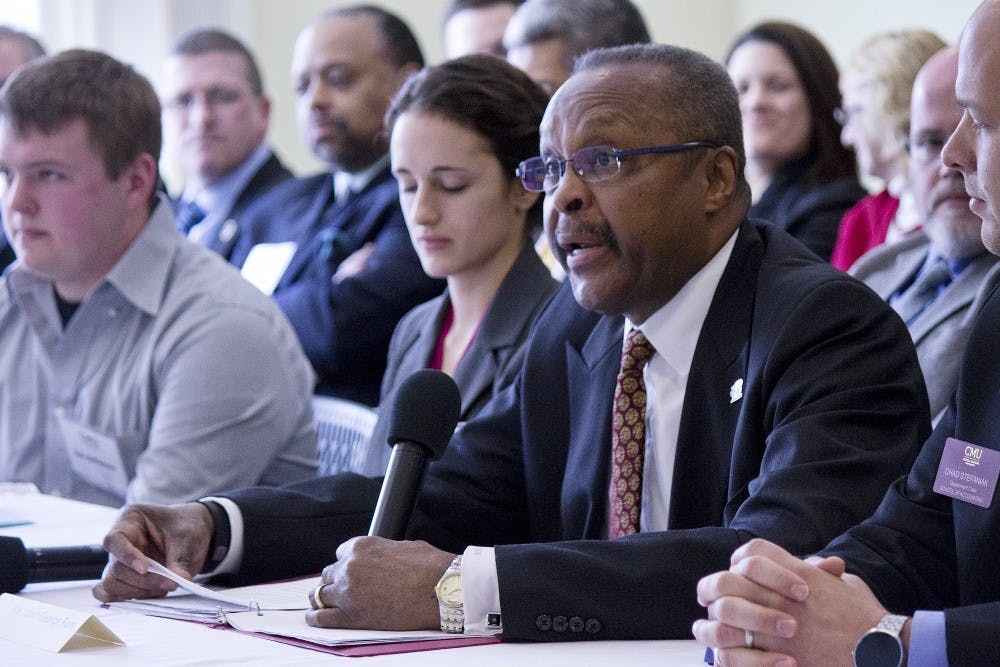EDITORIAL: Funding faux pas
Snyder's proposed increase to higher education funding doesn't solve financial issues

What would you do with the extra $28 million Michigan universities stand to gain if Gov. Rick Snyder's $54 billion budget is approved?
This funding increase might sound generous, but is actually an example of the state's declining commitment to higher education.
It is no reason for Michigan universities—or students—to rejoice.
The reality is Michigan has shifted its priorities. Community health makes up 32 percent of Michigan's total 2014 budget. Corrections receives 19 percent.
Higher education gets only 12 percent of the state's general fund expenditures.
In 1986, before most of today's students were born, state appropriations made up about 60 percent of operating revenues at state universities. Today, state dollars account for only 17 percent of the total operating budget at CMU.

University President George Ross addressed a Michigan Senate panel Feb. 19 to discuss the impact of lackluster investment in higher education. He told the panel that if CMU operated on state funding alone, the university would be broke in 62 days.
If Snyder's budget is approved the overall higher education budget will rise from $1.51 billion to $1.54 billion. This 2 percent increase will leave higher education spending about $34 million less than the last budget under Gov. Jennifer Granholm. In 2011, the budget was $1.57 billion.
Snyder cut more than $200 million from higher education in 2011, the first year he took office. His small nod to the budget this year will not restore it to a historic status quo.
Declining investment in higher education hurts students. As support from the state goes down, tuition rates rise.
At CMU, revenue from tuition, room and board makes up 70 percent of the total revenue and 56 percent of the university's total budget.
The funds from Snyder's proposal will go to help universities fund their general operations. In the 2014-15 operating budget, the Colleges of Humanities, Social and Behavioral Sciences, Science and Technology and Education and Human Services received the largest allocations from state appropriations, with 24, 19 and 15 percent, respectively.
The students in these and other colleges only stand to gain from increased investment from the state.
After state funds are allocated, each academic college is taxed at a different rate. The money from those taxes goes to fund the other parts of the university—like service centers—that do not receive an initial allocation, according to Vice President of Finance and Administrative Services Barrie Wilkes.
The rest of Snyder's proposed budget is split between K-12 schools, corrections, public safety, dental access, local governments, skilled trades, community colleges and a rainy day fund.
This year the state plans to set aside $113 million for road repairs. That amount does not include the projected $1.2 billion that would be raised by a May 5 ballot road funding proposal. The proposal suggests an increase in Michigan sales tax from 6 to 7 percent.
State officials ask students to make Michigan their home after graduation. They ask us to invest our time, and money, to help "reinvent" the state. How can they ask these things when their investment in their future leaders is so poor?
If state leaders can find ways to fix our roads, we are left wondering why they won't find ways to increase investment in higher education.
This is a call, lawmakers, to invest in us. Show us how much you think we mean to Michigan. Right now, you're sending us the wrong message—that we are 7 percent less important than the inmates you lock up in Michigan prisons.




